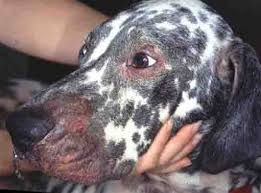Allergies are a very common cause of skin problems in pets and surprisingly, approximately 10% of all skin allergy cases in dogs are food related. Seeing your dog scratch constantly, rubbing up against furniture to itch and licking their fur more than usual, could be an indication of a number of potential skin issues, including a food allergy. Food allergies in dogs are typically due to proteins in their diet, with some of the most common causes being beef, dairy, chicken and egg proteins. Luckily, however, diagnosing and managing food allergies isn’t impossible – the hard part is figuring out exactly what an individual dog is allergic to.
What are food allergies?
Just like in people, a food allergy happens when a dog’s immune system thinks a certain type of protein in a food is dangerous. Their body will then fight off the so-called ‘harmful protein’ via the immune system that can trigger symptoms that are usually skin related. Other symptoms that may lead to the diagnosis of an underlying allergy can include ear infections, gastrointestinal problems (such as diarrhoea or vomiting), and excessive licking and scratching at certain areas of skin. Your first point of call should always be to contact your local vet if your dog is showing any of these symptoms. After a full physical exam and potentially a few simple diagnostic tests, if your vet suspects a food allergy, then your dog will likely have to undergo a food elimination trial to confirm this suspicion, as well as to find out what protein your dog is actually allergic to.
What’s a food elimination trial?
A food elimination trial works by feeding your dog a specially formulated diet with very low chance of causing allergy, so all potential allergens are completely removed from their diet. This typically takes around 8 -12 weeks to complete, and if your dog’s adverse reactions to their previous diet have cleared up, then it’s safe to assume that a food allergy to one or more proteins in this previous diet were to blame. After the trial is complete, you’ll need to reintroduce the original diet or suspected allergen to them again to see if they have a negative response, in order to confirm the diagnosis.
As dogs are generally only allergic to proteins, the specially formulated diets recommended by your vet will either feature a protein source your dog has never eaten before (novel protein diet) or a protein that has been broken down into tiny particles so their body doesn’t recognise the source (hydrolysed protein diet).
What’s the best food for allergies?
ROYAL CANIN®’s Hypoallergenic and Anallergenic diets take into account the nutritional needs of your dog both during a food elimination trial and as a long-term dietary solution to help manage their sensitivity to food.
Our Hypoallergenic diet uses soy protein that has been broken down into tiny molecules to stop your dog’s immune system recognising it and our Anallergenic diet uses feather protein hydrolysate, which is an alternative protein source rarely used in pet foods. We also have a selected protein diet called Sensitivity Control which contains duck and tapioca, and this could be used as a novel protein diet if your dog has never been fed duck before. On top of this, all three formulas use long chain omega 3 fatty acids from fish oil to promote a healthy skin and coat, and B vitamins alongside the amino acid histidine to help maintain the skin’s natural barrier effect. Both a hydrolysed protein diet and a novel protein diet like ROYAL CANIN®’s dermatology diets can be used as part of a short-term food elimination trial, or as a long-term nutritional solution if your dog is diagnosed with a food allergy.

